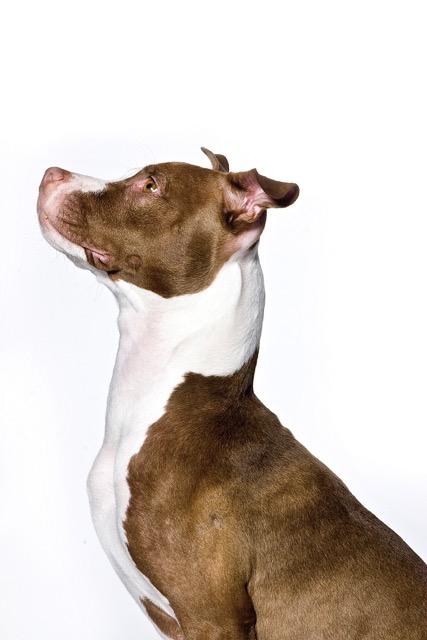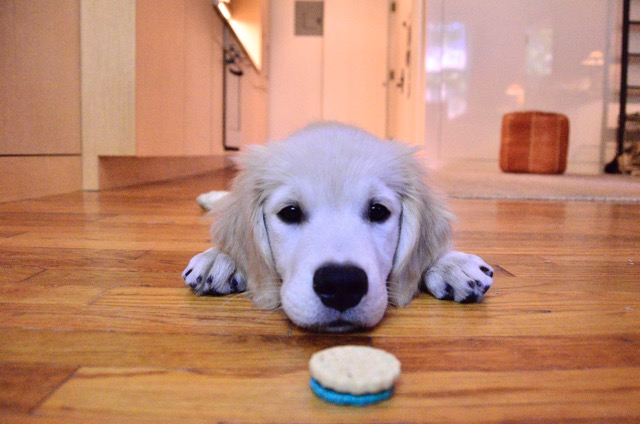
Does Your Dog Think It’s Name is No?
I usually begin classes and private lessons with an introduction to the many benefits of taking a positive, dog friendly approach to teaching. I am always pleased to see nods of approval from students as I explain how punishments more often than not result in a dog engaging in owner absent behavior problems (i.e. I’ll wait until my family of big, bad punishers is gone to engage in chewing everything I can find and eliminating behind the couch, where it hopefully won’t be found). While explaining how a punitive approach can also seriously damage the canine/human bond, I see plenty of people look lovingly at their dogs and imagine they are thinking that is the last thing they would want to have happen. At moments like this I am confident that people understand their role as their dog’s guide. That they will move forward with a plan for management and teaching that will set their dog’s up for a lifetime of success, safety, fun and happiness with their family.
The “No Syndrome” and Its Implications
However, even some of those students who begin the first lesson or class nodding in vigorous dog- friendly agreement fall prey to the big, bad “No Syndrome.” Saying “no” seems to be people’s default verbal response to just about anything their dog does, other than sleeping. And from my experience it is about as hard to fully extinguish this behavior from people’s behavioral repertoire as it is to get people to stop petting an adorable puppy who is jumping all over them. In the case of the puppy, I try to explain that each time the pup is rewarded for jumping (with giggles, petting, and eye contact) that behavior is becoming stronger. When the pup is an adult, jumping is not likely to be tolerated. So, why encourage it in a puppy and then confuse them later by changing the rules of polite greeting?
In the case of saying “no,” the first few times your dog hears this, they are likely to respond by stopping whatever they are engaged in doing because they are probably startled. This may be why people keep using the word, because they are reinforced by the dog stopping, which was the whole point of saying “no” in the first place. However, it doesn’t take most dogs long to tune out what has surely become a constant stream of no’s. After all, there are so very many things a dog can do in a home that most people consider inappropriate. Essentially, the dog learns to ignore being nagged.
Once the “no’s” stop working as well as they did the first few times, many people escalate their voice until they are yelling at their dog at the top of their lungs. Desensitization is the process by which you become less affected by something. Just like many people become desensitized to violence on TV, most dogs become desensitized to being yelled at. Unfortunately, at this point, many dogs are labeled as ‘stubborn’ or ‘willful.’
Negative Effects of the “No Syndrome”
Aside from the fact that simply telling your dog “no” is usually not very effective (and therefore results in the dog being labeled unfairly), it can also exacerbate problems and even create new ones which are usually far worse than the problem the dog was being reprimanded for in the first place.
While each dog has a unique temperament, there are some general types. Some dogs are temperamentally inclined to react quickly and vigorously to stimulus. For some of these dogs, being yelled at serves to put them in a more excitable state. This does not bode well for the dog being in a state of mind to learn what is expected. Other dogs have what might be referred to as a soft or sensitive temperament. My little dog Nora usually seems to be a happy go lucky sort. But, deep down she is a pretty sensitive girl and she has been that way from the first day I met her when she was a tiny pup. Yelling at a dog like this is likely to result in a degree of learned helplessness. Dogs like her would be far less able to try to figure out what is expected once they have been yelled at and sent into a state of fear.
Again, it may seem the “no” worked, but in reality the dog isn’t necessarily learning not to engage in the specific behavior it was yelled at for, but more likely all behaviors. Playing a part in creating this blunted or shut down response is certainly not kind nor does it predict future training fun and success.
Positive Alternatives to Saying “No”
So, the big question I hear time and again is: If I shouldn’t say “no,” how do I tell my dog he’s wrong? Generally speaking, you don’t. The exception is an emergency where you do whatever is necessary to keep your dog safe. But, in daily life it is much easier and more effective in the short and long term to instead ask, how do I tell my dog what he can do at any given moment to be right?
A dog who runs to you when you call can be easily removed from any potential situation that might previously have resulted in you yelling “no.” Likewise, if your dog is about to jump on someone or on a counter, ask him to sit or lie down. Better yet, you know your dog better than anyone. So, if you think your dog might fail in a specific situation, why not manage him to help him succeed? Have him on a leash at the front door and hold 3-4 treats. This way you can step on or hold the leash to prevent jumping and reward your dog for sitting to say hello to visitors. The same holds true if your dog is jumping on the kitchen counters as you prepare dinner. In this case, have your dog on leash and tether it to a stable object next to your dog’s bed where he can rest and play with a food stuffed chew toy.
Encouraging Positive Behaviors
Yelling “no” at your dog doesn’t give him nearly as much quality information as telling him to lie down and chew his toy or to come when called. So, try to see your dog’s inappropriate behaviors as opportunities for you to practice your calm and quiet training skills and to set your dog up for an opportunity to be right. Instead of correcting and discouraging your dog, manage, encourage, reward and adore him.
Explore Our Dog Training Courses
Educate your dog with Andrea Arden and her team.
New York | Los Angeles | Connecticut
Share
- Group Classes
- Private Lessons
- Virtual Training
- Puppy Play Groups
- Puppy Training
- Articles & Advice



